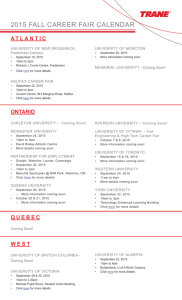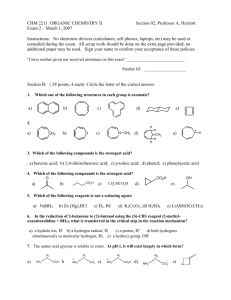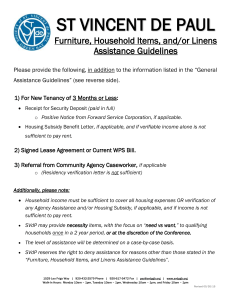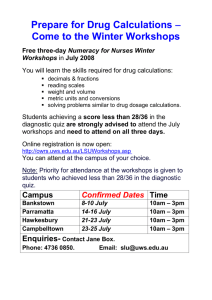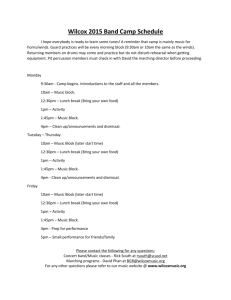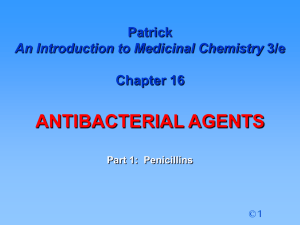Homework 7
advertisement
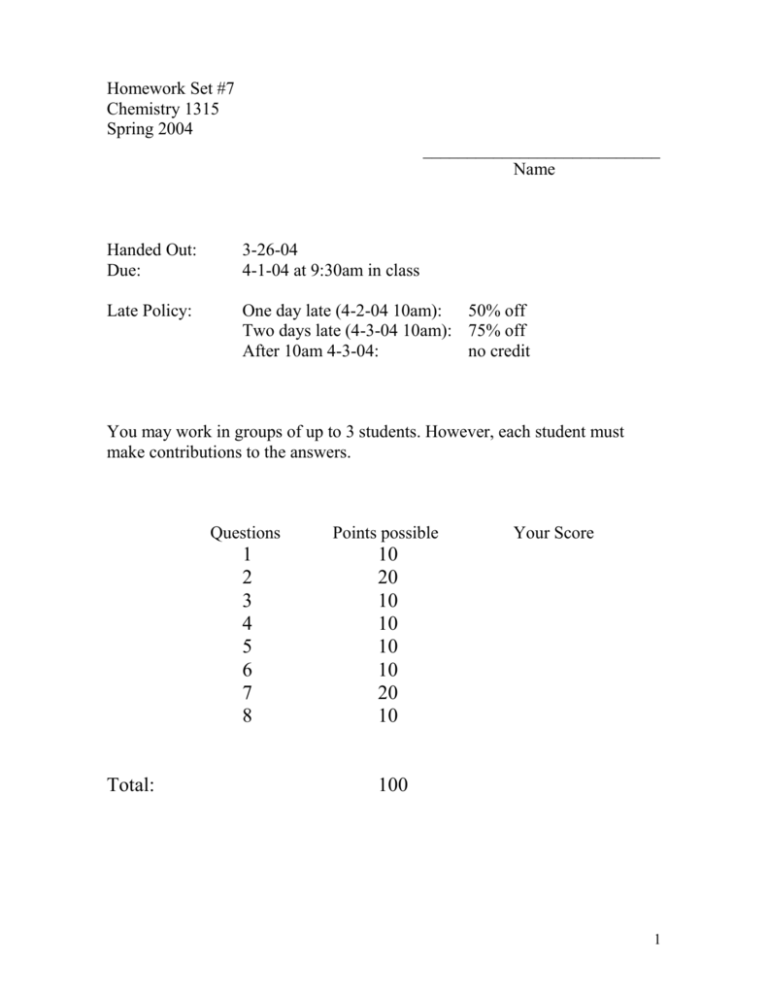
Homework Set #7 Chemistry 1315 Spring 2004 ___________________________ Name Handed Out: Due: 3-26-04 4-1-04 at 9:30am in class Late Policy: One day late (4-2-04 10am): 50% off Two days late (4-3-04 10am): 75% off After 10am 4-3-04: no credit You may work in groups of up to 3 students. However, each student must make contributions to the answers. Total: Questions Points possible 1 2 3 4 5 6 7 8 10 20 10 10 10 10 20 10 Your Score 100 1 Question #1 (10 points) Draw beta-L-glucopyranose (cyclic beta-L-glucose) in its most stable chair conformation. Label the substituents as axial or equatorial. 2 Question #2 (20 points) At equilibrium in aqueous solution, D-fructose consists of 70% betapyranose, 2% alpha pyranose, 23% beta furanose, and 5% alpha furanose forms. Draw all four. 3 Question #3 (10 points) The two stereoisomers (alpha and beta) of maltose (a disaccharide) undergo mutarotation which means they interconvert into each other. Based on your understanding of carbonyl and alcohol chemistry, provide a mechanism that will account for this exchange. 4 Question #4 (10 points) D-2-deoxyribose is found in DNA. Draw the structure. Deoxyribose and ribose form esters with phosphoric acid in DNA and RNA. Can both monosaccharides react to form the same number of ester combinations? Show the reactive sites for esterfication. 5 Question #5 (10 points) Give the IUPAC name for the following carboxylic acids: A) H3C CO2H CH3 B) H2C O HO C) H3C CO2H 6 Question #6 (10 points) Predict the product from the reaction of phenylacetic acid with each of the following reagents: a) KOH, b) SOCl2, c) LiAlH4 then H2O, and d) CH3CH2OH, H+ 7 Question #7 (20 points) Outline a sequence of reaction(s) that will allow pentanal to be converted into a) pentanoic acid, b) hexanoic acid, and c) 2-hydroxy hexanoic acid. 8 Question #8 (10 points) Describe two methods for the preparation of 5-methyl hexanoic acid from 4-methyl-1-pentanol. 9
